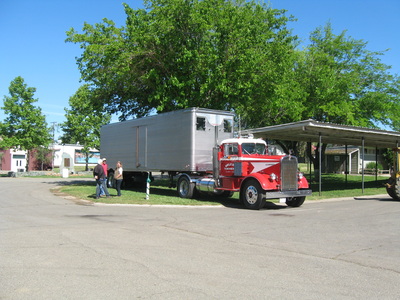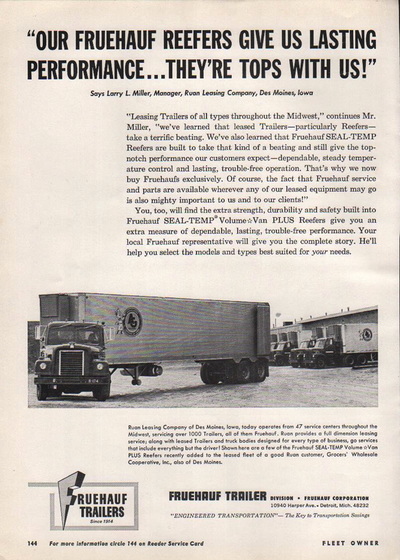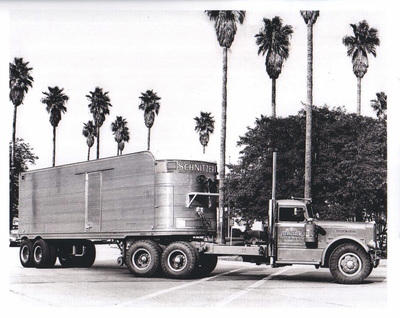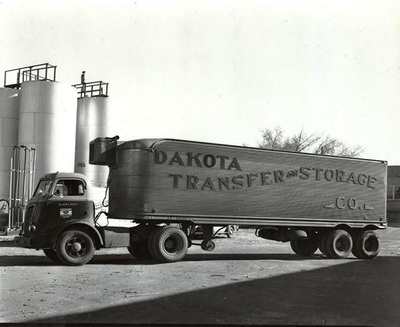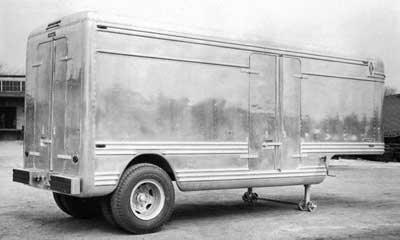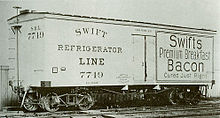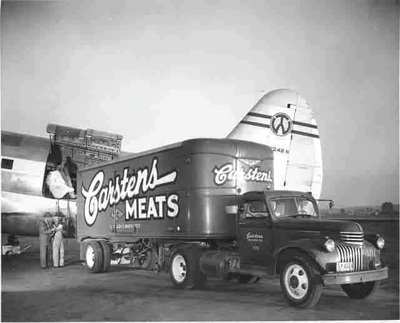Fruehauf Reefers
REFRIGERATION TRAILERS
Railroads were using refrigeration in their railcars as early as 1877 and these railcars were built in Detroit. William Davis patented a refrigerator car that employed metal racks to suspend animal carcasses above a frozen mixture of ice and salt. In 1868, he sold the design to George H. Hammond, a Detroit meat packer, who built a set of cars to transport his products to Boston using ice from the Great Lakes for cooling. August Fruehauf used this technology to adapt a semi-trailer for transporting perishable foodstuffs in the early 1920s. These units had four- and six-ton capacities and were generally used to haul cans of ice cream. After the cargo was loaded, a trap door on the roof of the trailer was opened to allow pulverized ice and salt to enter through spouts keeping the cargo cold. This was later improved creating vents in the front and back of the semi-trailer to allow air in during travel, which was cooled by the ice. Metal floors were grooved so that melted ice water would be drained out the back.
Railroads were using refrigeration in their railcars as early as 1877 and these railcars were built in Detroit. William Davis patented a refrigerator car that employed metal racks to suspend animal carcasses above a frozen mixture of ice and salt. In 1868, he sold the design to George H. Hammond, a Detroit meat packer, who built a set of cars to transport his products to Boston using ice from the Great Lakes for cooling. August Fruehauf used this technology to adapt a semi-trailer for transporting perishable foodstuffs in the early 1920s. These units had four- and six-ton capacities and were generally used to haul cans of ice cream. After the cargo was loaded, a trap door on the roof of the trailer was opened to allow pulverized ice and salt to enter through spouts keeping the cargo cold. This was later improved creating vents in the front and back of the semi-trailer to allow air in during travel, which was cooled by the ice. Metal floors were grooved so that melted ice water would be drained out the back.

